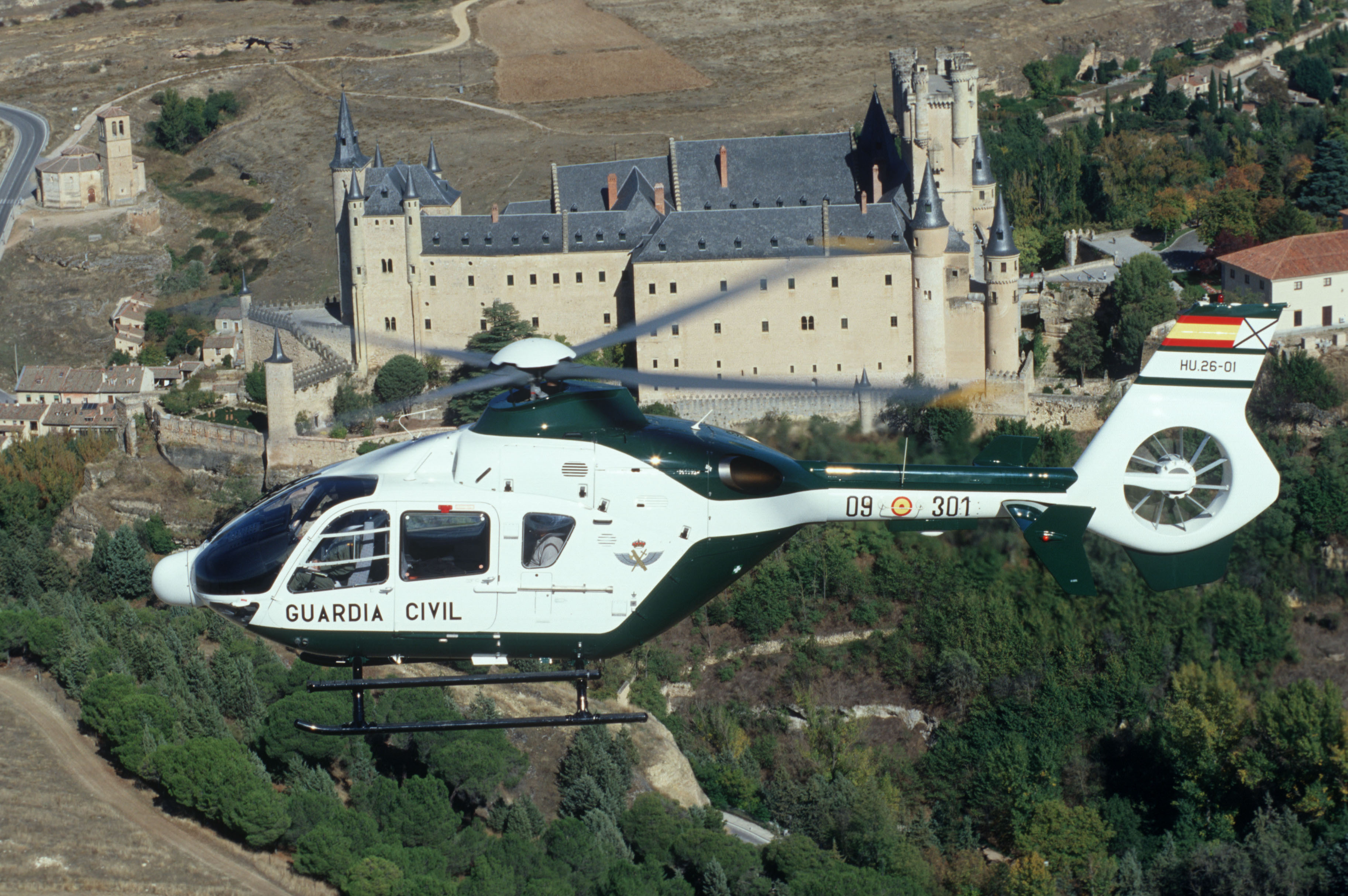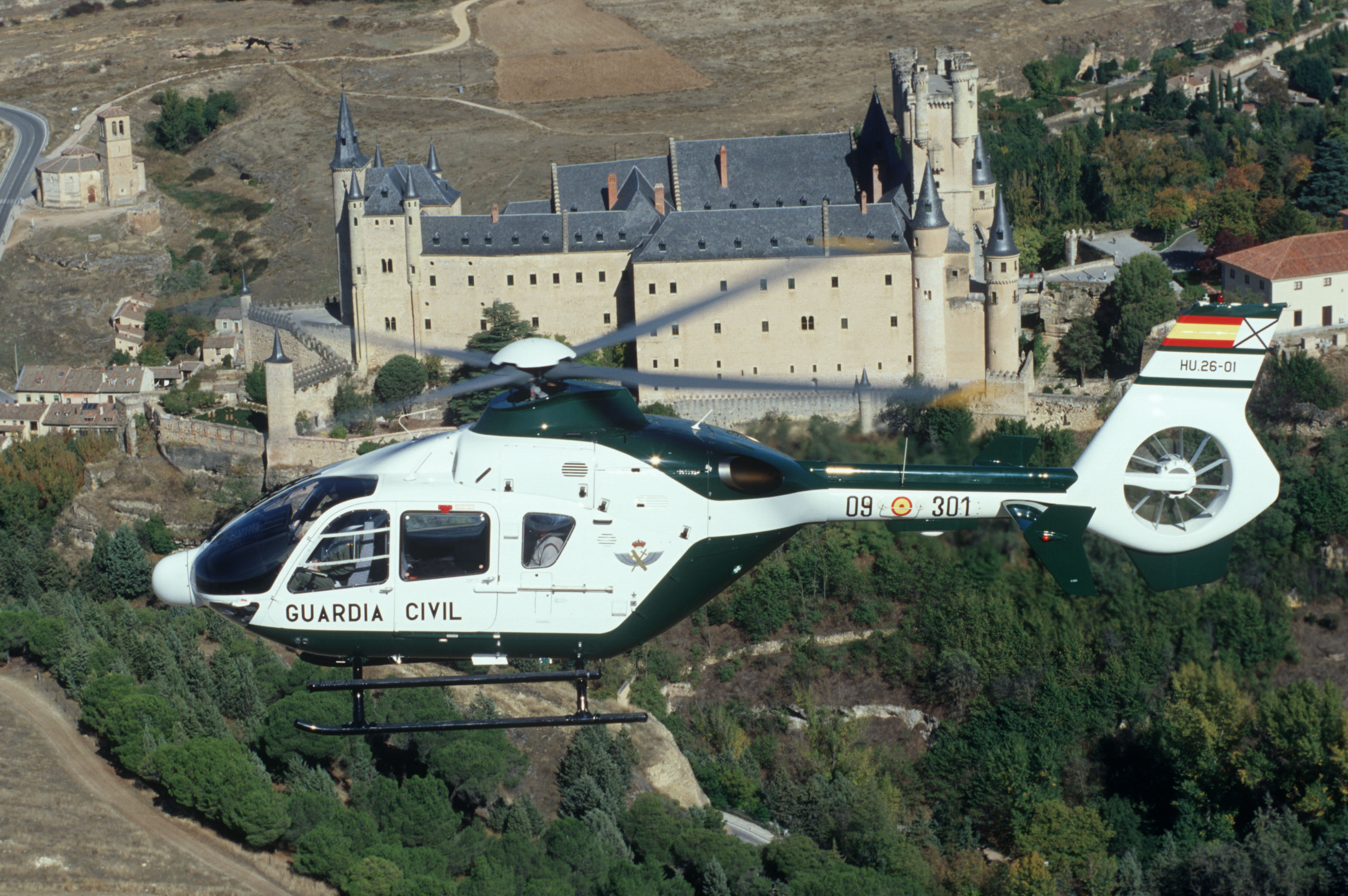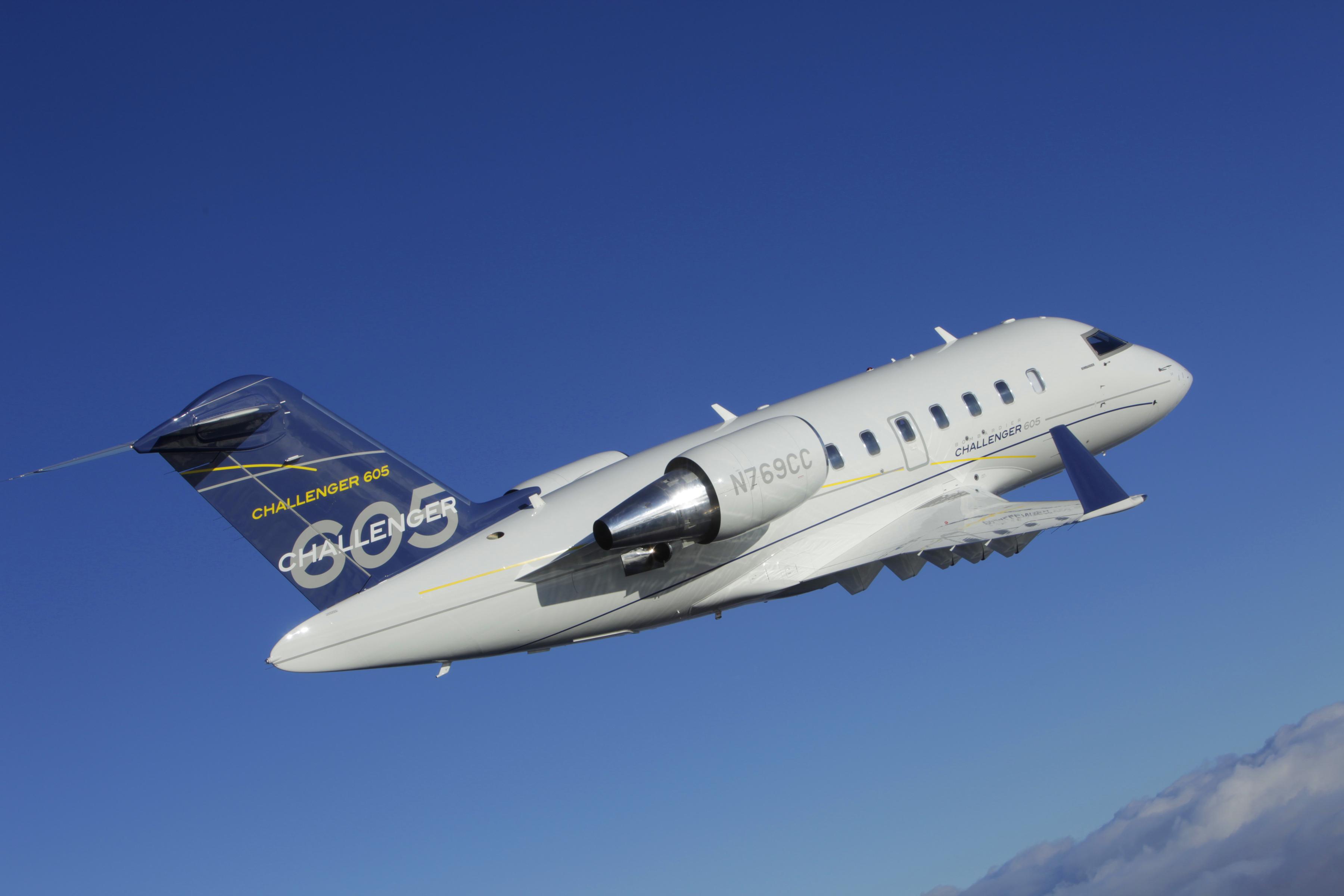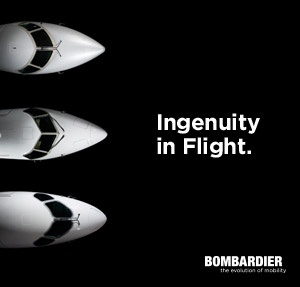Eurocopter firma un contrato de 12 helicópteros EC135 con el Ministerio del Interior español, que serán fabricados en Albacete
February 4, 2010
Albacete, 04 de febrero de 2010
El Ministerio del Interior español ha firmado el contrato de adquisición de doce helicópteros Eurocopter EC135 P2i. Seis de los aparatos irán destinados, en configuración IFR policial, a la Policía Nacional y los otros seis se integrarán a la flota del Servicio Aéreo de la Guardia Civil, uno de ellos adaptado para servicio de rescate en montaña.
En función del calendario acordado, cuatro de las doce unidades serán entregadas en 2010, cuatro lo harán al año siguiente y las restantes en 2012. Tanto la Policía Nacional como la Guardia Civil disponen actualmente en sus flotas respectivas de siete helicópteros EC135. A estos catorce aparatos actualmente en servicio se sumarán los doce ahora adquiridos y, mediante la firma futuros contratos, se alcanzará un total de 51 aparatos EC135, con los que se completaría el plan de modernización de flota de los Cuerpos y Fuerzas de Seguridad del Estado.
Lutz Bertling, presidente de Eurocopter, declaró: “Estamos muy satisfechos por la firma de este nuevo e importante contrato del Ministerio del Interior español, que afianza todavía más nuestro liderazgo mundial en el campo de los helicópteros dedicados a misiones de servicios públicos. Es también gratificante para nosotros lograr un nuevo acuerdo con España, el tercer mercado doméstico del grupo Eurocopter”.
Por su parte, Juan Carlos Martínez Sáiz, consejero delegado de Eurocopter en España ha dicho: “El contrato del Ministerio del Interior pone de manifiesto una vez más el acierto que supuso instalar nuestra fábrica de helicópteros en Albacete, situando a España en la primera línea mundial en la producción de este tipo de aeronaves. Quiero agradecer la confianza de nuestro Ministerio del Interior en un producto de tanto éxito a nivel mundial como es el EC135, con la satisfacción de confirmar que estos helicópteros se fabricarán en España”.
El EC135 es un helicóptero polivalente, bimotor, de avanzado diseño y con tecnología de vanguardia, que lo hace ideal para misiones de mantenimiento del orden. Durante más de diez años, el EC135 ha sido la opción preferida por los operadores de servicio público en todo el mundo.
Los doce aparatos hoy adquiridos serán fabricados y ensamblados en la factoría de Eurocopter en Albacete. La cadena de montaje final del EC135 en esta ciudad es una de las dos que Eurocopter posee para este helicóptero bimotor ligero, estando la otra localizada en Donauwörth (Alemania). El EC135 es un helicóptero multimisión muy utilizado en todo el mundo, del que se han entregado hasta la fecha más de 850 unidades en 40 países. En España se cuenta actualmente con 50 unidades de este modelo al servicio de distintos operadores y misiones.
“Eurocopter and Spanish Ministry of the Interior Sign Contract for 12 EC135s to Be Assembled in Albacete”
February 4, 2010
Albacete, February 04, 2010
Eurocopter and the Spanish Ministry of the Interior have signed a contract for the purchase of twelve EC135 P2i helicopters. Spain’s National Police Force will operate six of the new aircraft for law enforcement missions, while the remaining six will join the current fleet of the Spanish Guardia Civil. One of this latter group of helicopters will be configured for mountain rescue missions.
The agreement calls for an initial delivery of four helicopters in 2010. Four more helicopters are to follow next year, and the remaining aircraft will be delivered in 2012. The 12 helicopters acquired under this new contract will join the 14 EC135s already operated by the National Police Force and the Guardia Civil (seven each). Two additional contracts are in the works and will subsequently bring the total number of EC135s up to 51, thus completing the ambitious helicopter modernization program of Spain’s law enforcement agencies.
Eurocopter CEO Lutz Bertling declared on this occasion: “We are particularly pleased to sign this landmark agreement with the Spanish Ministry of the Interior, as it illustrates yet again Eurocopter’s position as the leading helicopter manufacturer for public service missions. It is also gratifying for us to reach a new agreement with Spain, the third domestic country of the Eurocopter group.”
“This contract with the Ministry of the Interior proves once again that we made the right decision to set up new industrial activities in Albacete,” added Juan Carlos Martínez Sáiz, CEO of Eurocopter in Spain. “Spain now ranks among the top tier countries manufacturing helicopters, and I would like to thank the Spanish government for their renewed vote of confidence in the EC135. This helicopter is a remarkable worldwide success story, and I am convinced that Spain will be fully satisfied with this new aircraft.”
All 12 helicopters covered by the contract will roll off Albacete’s EC135 assembly line, which is one of two lines that Eurocopter operates for the light twin-engine helicopter, along with the assembly line in Donauwörth, Germany. 11 of the 12 helicopters will be equipped for IFR flights.
The twin-engine EC135 is a highly sophisticated, multi-purpose helicopter featuring cutting-edge technology that makes it the perfect choice for public safety missions. It has been the preferred choice of parapublic operators worldwide for more than a decade. To date, Eurocopter has delivered more than 850 EC135s to customers in 40 different countries. Approximately 50 EC135s are currently operated by different customers in Spain.
Airbus Military fourth A400M assembly process begins
February 3, 2010
The final assembly process for the fourth Airbus Military A400M military airlifter has already begun in Seville (Spain). The wings for the aircraft, known as MSN4, arrived at the final assembly line of the aircraft, known as MSN4, on January 21st on board an Airbus Beluga. The vertical tailplane manufactured in Stade (Germany) is expected in mid-February followed by the fuselage and nose one month later. A400M MSN4 will have its maiden flight before the end of 2010. The picture shows the wings in the A400M final assembly line.
TRUEngineTM Program Expands to 25 Percent on Commercial CFM Fleet
February 3, 2010
SINGAPORE — 3 February 2010 — Since the program launch in mid-2008, approximately 4,500 CFM56 engines in operation with 34 operators and 11 lessors have been qualified for TRUEngine status as the program continues to gain significant industry acceptance. This number represents more than 25 percent of the in-service CFM56 commercial fleet worldwide.
The TRUEngine designation serves as a method for identifying engines with CFM-approved content and facilitates product support of the engine system.
“CFM is well positioned to provide full product support for CFM56 engines based both on our extensive fleet experience, as well as our product-level knowledge,” said Chaker Chahrour, executive vice president of CFM International. “The TRUEngine designation enhances customer value in that it confirms engine content and the applicability of CFM technical data and, thus, streamlines the support process.”
Moreover, industry stakeholders use the knowledge of engine content to evaluate engine value and re-marketability.
The TRUEngine designation is available for all CFM56 engines. To qualify, a combination of fleet operational and maintenance records must be submitted to CFM for evaluation to ensure the engine content, overhaul practices, and repairs are consistent with CFM requirements for that engine model.
CAE to launch Multi-crew Pilot License (MPL) beta program with AirAsia using new performance-based requirements
February 3, 2010
SINGAPORE–(Marketwire – Feb. 3, 2010) – (NYSE:CAE)(TSX:CAE) CAE today announced at the Singapore Airshow 2010 that it has signed a contract with AirAsia to train student cadets for the airline in a beta program designed to International Civil Aviation Organization (ICAO) standards for the Multi-crew Pilot License (MPL). The CAE program is the first application of an MPL program that will adhere to new performance-based Approved Training Organization (ATO) certification requirements developed by Transport Canada.
The objective of the CAE MPL initiative is to deliver a best-in-class training program that provides airlines with pilots who will safely and efficiently operate a modern multi-crew, multi-engine, turbine-powered commercial transport aircraft in all expected operational environments.
At the conclusion of the 56-week beta program, successful student cadets are expected to receive an MPL license from Transport Canada and authority from the Department of Civil Aviation Malaysia (DCAM), and will enter AirAsia’s initial operating experience (IOE) program for Airbus A320 First Officers.
“AirAsia is proud to partner with CAE, a global leader in civil aviation training, in the first MPL program designed under the rigorous requirements developed by Transport Canada and DCAM,” said Tony Fernandes, Chief Executive Officer of AirAsia. “We expect the graduates of the CAE MPL beta class will be extremely well trained and fully competent to move into the right seat in our A320 fleet as they begin their careers as AirAsia pilots.”
CAE’s blended training methodology for the MPL beta program integrates theoretical knowledge, simulation-based training, and aircraft training throughout the curriculum. The four-phase program will begin in March with Core and Basic phases at Moncton Flight College (MFC) in Dieppe, New Brunswick, Canada, part of the CAE Global Academy network. The cadets will then transition to CAE SimuFlite in Dallas, Texas, United States, for Phase 3 (Intermediate). The MPL program will conclude with Phase 4 (Advanced) training at CAE’s aviation training centre in Toronto, Ontario, Canada.
“The MPL is another option for our airline customers in CAE’s cadet-to-captain portfolio of civil aviation training solutions. CAE has designed our MPL beta program to provide cadets with the knowledge, skills, and attitudes required to be a highly competent, safe, and successful professional commercial pilot,” said Jeff Roberts, CAE’s Group President, Civil Simulation Products, Training and Services. “We have thoroughly examined the ICAO and Transport Canada MPL requirements, as well as aviation industry best practices, and applied CAE’s experience of more than 60 years in pilot training. The result is a systematic, competency-based MPL program which can produce the consistently high-quality flight crews needed for today’s modern aircraft.”
GULFSTREAM G150 RECEIVES FAA, EASA APPROVAL FOR STEEP APPROACH
February 3, 2010
Capability Key to Access at European And Canadian Airports
SAVANNAH, Ga., February 2, 2010 — Gulfstream Aerospace Corp., a wholly owned subsidiary of General Dynamics (NYSE: GD), announced today that the Gulfstream G150 aircraft has achieved steep approach certification from the U.S. Federal Aviation Administration (FAA) and the European Aviation Safety Agency (EASA).
This approval allows the G150 to operate at airports with an approach angle of up to 6 degrees. Most airports have an approach angle of 3.5 degrees or less.
Several airports worldwide require steep approach certification to land at their facility due to terrain, obstacles or local noise ordinances. They include: Lugano in Switzerland; Sion in Switzerland; Stephenville International in Newfoundland, Canada; Marseille Provence in Marignane, France; and Chambery in Le Viviers du Lac, France.
The G150 is the first Gulfstream aircraft to receive steep approach certification from the FAA and EASA.
In October 2006, the mid-size, high-speed G150 business jet was certified by the FAA for Stage 4, the industry’s most stringent noise standards. It was the first Gulfstream business jet to be certified to this standard. Additionally, the G150 has group Reduced Vertical Separation Minimum (RVSM) approval.
“These FAA and EASA certifications allow our Gulfstream G150 operators around the world greater flexibility, particularly the operators in Europe,” said Pres Henne, senior vice president, Programs, Engineering and Test.
The G150 successfully completed its first flight on May 3, 2005, and was simultaneously certified by both the FAA and the Civil Aviation Administration of Israel on Nov. 7, 2005. Powered by two fuel-efficient Honeywell TFE731 engines, the wide-cabin aircraft offers the best performance in its mid-sized class with a range of 2,959 nautical miles at 0.75 Mach. It also offers the most comfortable cabin environment in its class. Its wide-body fuselage provides stand-up headroom, ample aisle space and generous legroom and headroom when seated.
Bombardier Delivers 100th Challenger 605 Jet Manufactured
February 3, 2010
Montreal, February 03, 2010 – Bombardier Aerospace today announced the entry into service
of the 100th manufactured Challenger 605 jet. With over 800 aircraft manufactured, the popular
Challenger 600 series has accumulated over 4,000,000 flight hours with a dispatch reliability of
over 99.8 per cent as at September 2009.
“We are delighted to announce this milestone delivery,” said Michel Ouellette, vice-president
and general manager, Challenger programs, Bombardier Business Aircraft. “This is a testament
to the popularity and reliability of this robust platform – a jet that continues to prove itself as a
valuable business tool for corporate leaders worldwide.”
In service since January 2007, the Challenger 605 jet builds on the legacy of quality and
reliability of its predecessor, the acclaimed Challenger 604 jet, leading its market share segment
throughout the world. The Challenger 605 jet can whisk five passengers from Montreal to any
European destination non-stop*, including London City Airport, in superior comfort. It features
the widest stand-up cabin of any large category business jet available today and is equipped
with the Pro Line 21 avionics suite and an all-new cabin electronic system. The Bombardier
Enhanced Vision System (BEVS) is offered as optional equipment on the Challenger 605 jet.
About Bombardier
A world-leading manufacturer of innovative transportation solutions, from commercial aircraft
and business jets to rail transportation equipment, systems and services, Bombardier Inc. is a
global corporation headquartered in Canada. Its revenues for the fiscal year ended
Jan. 31, 2009, were $19.7 billion US, and its shares are traded on the Toronto Stock Exchange
(BBD). Bombardier is listed as an index component to the Dow Jones Sustainability World and North America indexes.
Embraer could develop the largest aircraft in its history
February 1, 2010
According to a press report in Folha de S.Paulo, based on interviews with a senior executive of the manufacturer, Embraer is considering the development of the largest aircraft in its history. The new aircraft would be based on the 195 model with capacity for 122 passengers, and could be available for delivery by 2015 or 2016.
TAP is reinstating service to Viracopos in Brazil
February 1, 2010
The Portuguese airline which already serves Rio de Janeiro, Belo Horizonte and other destinations in the northeastern part of the country, is reinstating service to Viracopos airport in Campinas. It is adding a third nonstop to Sao Paulo from Lisbon and will operate four weekly flights to Campinas.
Aero Republica to strengthen its service to Ecuador from Colombia
February 1, 2010
Roberto Junguito, president of the Colombian affiliate of the “model airline” Copa, announced that beginning on March 26 Aero Republica will launch its first route
Between Bogota and Guayaquil. The new four-time weekly ERJ190 service is part of the airline’s plan to strengthen its service within the region.
<









